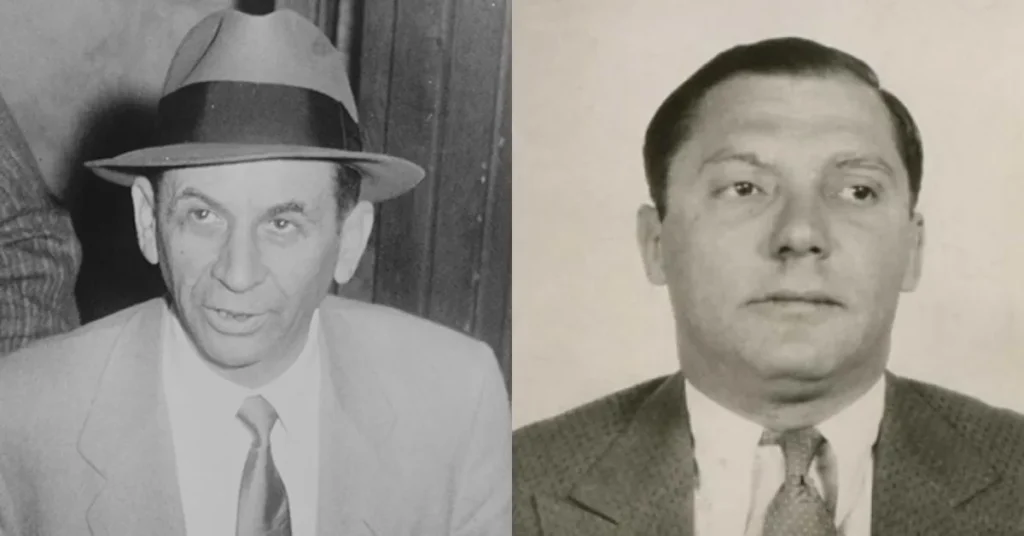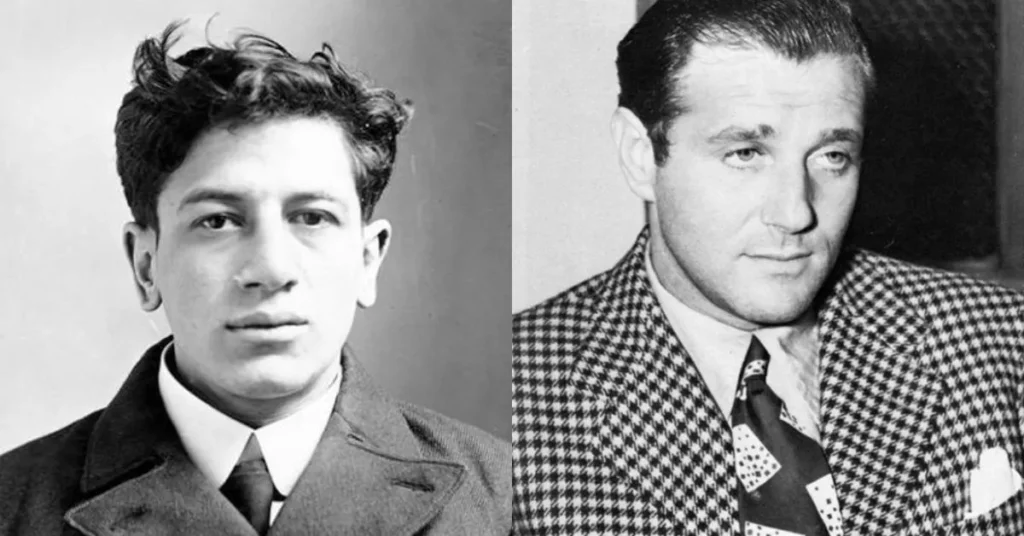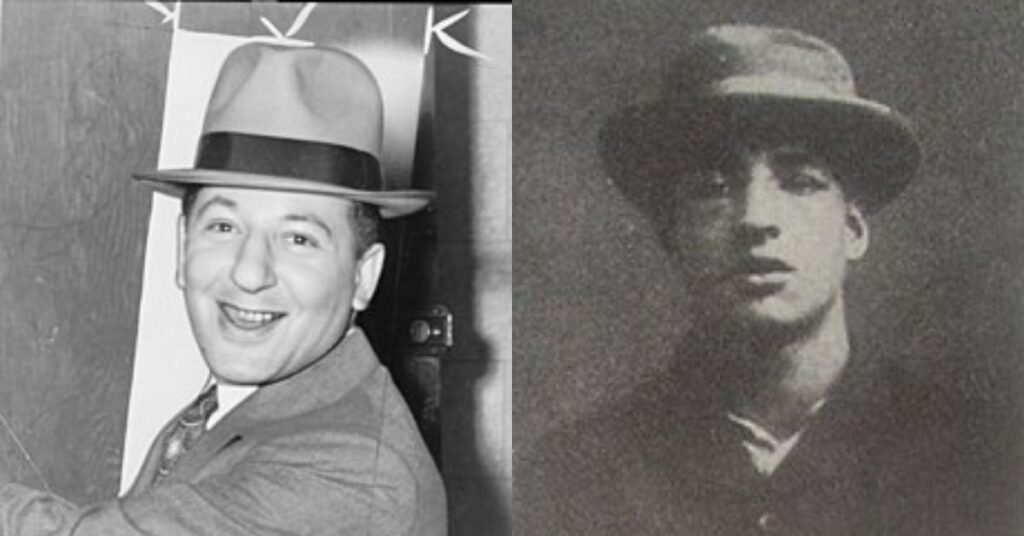There was a group of Jewish Americans who got involved in organized crime in the United States in the early 19th century. Most of them were recent immigrants from Eastern Europe and created several criminal organizations. However, most of these groups are not around anymore. People sometimes talk about it in different ways, calling it the Jewish Mob, Jewish Mafia, or Kosher Mob in popular culture. In this article, we will take a look at seven of the most famous Jewish gangsters of all time.
Meyer Lansky
Meyer Lansky, popularly known as the “Mob’s Accountant,” was a prominent figure in American organized crime. Born in Grodno, Russian Empire (now Belarus), Lansky emigrated to the United States in 1911. He eventually became a well-known member of the Jewish Mob.

Lansky formed a lifelong partnership with Charles “Lucky” Luciano In the 1920s. His influence extended globally through a gambling empire that included casinos in Las Vegas, Cuba, The Bahamas, and London. He was a key figure in the consolidation of the mob into an organized entity and pioneered money laundering and offshore banking for the Mafia.
Meyer Lansky’s operations were successful due to his expertise in managing gambling establishments, mathematical understanding of odds, and ability to make unofficial deals with law enforcement for security.
Lansky even provided help to the Office of Naval Intelligence’s Operation Underworld during the Second World War. He used organized crime to protect the New York waterfront from potential German spies and infiltrators. In 1946, he invested in Bugsy Siegel’s Flamingo Hotel in Las Vegas and played a crucial role in organizing the Havana Conference in 1946.
Following the Cuban Revolution in 1959, Lansky’s casinos were confiscated, forcing him to move to the Bahamas. Despite facing tax evasion charges in 1970, he escaped to Israel and later returned to the U.S., where he was acquitted in 1973.
Lansky spent his last years in Miami Beach, Florida, passing away on January 15, 1983. Despite rumors of a vast amount of hidden wealth, he left behind limited assets, challenging the perception of him as an all-powerful crime figure. The true extent of Lansky’s fortune remains a mystery.
Kid Cann
Isadore Blumenfeld, known as Kid Cann, was a notorious Jewish mobster in Minneapolis, Minnesota, who operated from the 1920s to the 1960s. Born in 1900 in Romania, Kid Cann’s family immigrated to the U.S. when he was young. He began selling newspapers and running errands for the people in the red-light district due to the poor financial condition of his family.
Kid Cann and his brothers became powerful in organized crime after they became involved in bootlegging and illegal gambling during the Prohibition era. They had connections with the Chicago Outfit and the Genovese crime family. Kid Cann’s notoriety increased with the murder of journalist Walter Liggett in 1935.
Kid Cann often evaded serious convictions despite facing numerous allegations and accusations. His criminal empire extended beyond Minneapolis, extending to Miami Beach and Cuba.
Cann was convicted under the Mann Act for transporting a s*x worker across state lines in 1959. He served a brief prison term but continued illegal activities after being released from prison. His involvement in various criminal enterprises went on until his death in 1981.
Harry Horowitz
Popularly known by his moniker, “Gyp the Blood,” Harry Horowitz was a Jewish-American Mafia Boss and leader of the Lenox Avenue Gang that operated in New York City. Measuring five foot and five inches, Harry was a small but strong man. He served several prison terms for burglary and robbery. His most notorious act was the murder of bookmaker Herman Rosenthal in 1912 outside the Hotel Metropole.

Harry and his accomplices were convicted and sentenced to death in November 1912. They were denied to make an appeal despite claiming innocence during the trial. Horowitz and his associates were executed in the electric chair on April 13, 1914.
Just before his death, one of his accomplices admitted to lying during the trial, adding a controversial twist to the case. The infamous Rosenthal murder and subsequent trials resulting in his execution marked the end of Harry Horowitz’s criminal life.
Also Read: Italian Mafia Ranks and Roles: Who is Who in the Mob?
Bugsy Siegel
Bugsy Siegel was a notorious Jewish-American mobster known for his role in shaping the development of the Las Vegas Strip. Growing up in the tough neighborhoods of Brooklyn, he found his way into the world of crime at an early age, committing thefts and taking part in protection rackets. He formed a close partnership with Meyer Lansky, creating the infamous Bugs and Meyer Mob.
Siegel’s criminal endeavors expanded during Prohibition, and he later became a prominent figure in Murder, Inc. In the 1930s, he played a crucial role in ending the Castellammarese War, contributing to the rise of organized crime in America. Siegel’s criminal exploits even reached Hollywood, where he partook in social gatherings with celebrities and developed illegal rackets.
In the mid-1940s, Siegel saw an opportunity in Las Vegas and took control of the Flamingo Hotel with the goal of establishing legitimate businesses. However, the Flamingo faced financial challenges despite his efforts. Siegel’s extravagant spending and possible misappropriation of funds led to discontent among mob members.
On June 20, 1947, Bugsy Siegel’s life came to a violent end when an unknown assailant shot him multiple times at his girlfriend’s Beverly Hills home. The motives behind Siegel’s murder remain a mystery with speculations suggesting dissatisfaction among his associates. However, Siegel did leave an indelible mark on the history of Las Vegas, contributing to its transformation into a thriving entertainment and gambling hub.
Louis “Lepke” Buchalter
Louis Buchalter was a notorious American mobster in New York City during the 1930s. Buchalter ventured into a life of crime following his father’s death in 1909, facing arrests for burglary and assault in his early years.

Upon his release from prison in 1922, Buchalter teamed up with childhood friend Jacob “Gurrah” Shapiro and took control of the garment industry unions through intimidation and force. Their duo’s influence expanded into protection rackets and they later formed an alliance with Tommy Lucchese, a leader of the Lucchese crime family.
In the early 1930s, Buchalter orchestrated a system for contract killings, which later came to be known as Murder, Inc. His most significant hit was Dutch Schultz, whose death eliminated a formidable threat to the National Crime Syndicate.
Buchalter’s downfall began in 1936 when he ordered the murder of Joseph Rosen, a Brooklyn candy store owner. Convicted of violating federal anti-trust laws, he and Shapiro disappeared but continued operating within the Mafia. Buchalter surrendered in 1939 and faced charges related to heroin smuggling and labor extortion after an extensive manhunt.
In 1941, he was convicted of the Rosen murder based on testimonies from mobster Abe Reles and Albert “Tick-Tock” Tannenbaum. Despite legal appeals, the U.S. Supreme Court upheld his conviction in 1943 and Buchalter was executed in Sing Sing’s electric chair on March 4, 1944.
Also Read: Does the Italian Mafia Still Exist in New York ?
Benjamin Fein
Benjamin Fein was an influential Jewish American gangster in 1910s New York. Growing up in poverty on the Lower East Side, Fein turned to petty theft and became a skilled organizer, leading his gang in armed robbery.
Joining “Big” Jack Zelig’s organization in 1910, Fein entered the world of labor union extortion in the Garment District. His gang served as labor sluggers and dominated the East Side.
Fein’s monopoly was challenged by rival gangs in 1913, sparking the New York Labor Slugger War. Fein managed to stay out of prison despite a number of run-ins with law enforcement due to his political connections. He was convicted of murder in 1915r but was eventually released from prison in 1917. After the gang war ended, Fein retired and became a successful garment businessman.
Benjamin Fein was once again arrested in a police raid ordered by District Attorney Thomas E. Dewey in 1941. Sentenced to ten to twenty years, he vanished from public records after the trial.
Abe “Kid Twist” Reles
Abe “Kid Twist” Reles was a notorious Jewish mobster and a key hitman for Murder, Inc. who operated in New York. Growing up in Brooklyn, Reles embarked on a criminal path early in life. His ruthless acts of violence, which involved him using an ice pick as a weapon, earned him the moniker “Kid Twist.”
Reles’s criminal journey kicked off during the Prohibition era when he worked for the Shapiro brothers, engaging in petty crimes and entering the slot machine business. He survived an ambush attempt by the Shapiros and caused the deaths of several key figures from their gang as revenge.
Reles became a government informant in 1940 to escape capital punishment. The information provided by him led to convictions and executions of numerous Murder, Inc. members, including his former boss Lepke Buchalter.
Reles was set to testify against high-ranking mobster Albert Anastasia. However, he mysteriously fell to his death from a hotel window while in police custody. The death was officially ruled an accident but, suspicions of foul play and rumors of bribes for his demise continue to persist.
